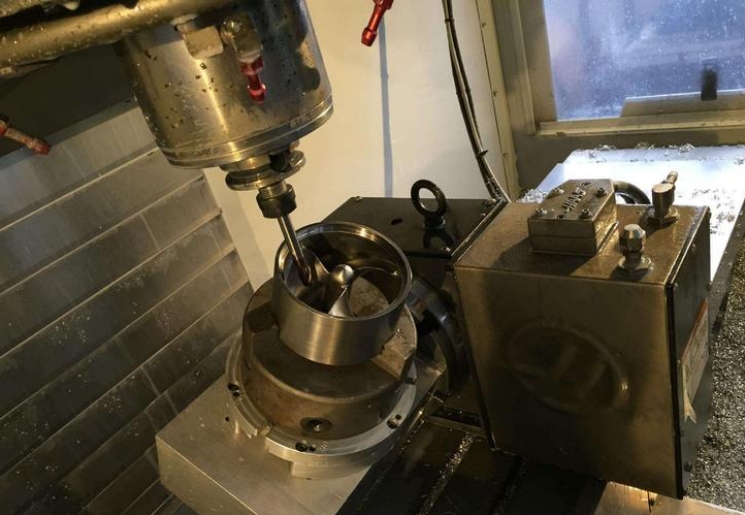Thank you for your
attention on Yesheng !
Common Issues and Solutions in Titanium Alloy Machining
Main Challenges in Titanium Alloy Machining:
1、Poor Thermal Conductivity: Titanium alloys have low thermal conductivity, which causes heat generated during cutting to concentrate in the cutting zone. The temperature at the cutting edge can rise to 1000°C, leading to rapid tool wear, cracking, and chip buildup, ultimately shortening tool life.
2、Elastic Deformation: Titanium alloys have a relatively low elastic modulus, making them prone to elastic deformation during machining, especially when processing thin-walled or ring-shaped parts. This increases the strength and hardness of the material at the cutting point, leading to cutting pressure that causes the workpiece to deform elastically and rebound, increasing friction between the tool and workpiece, and generating additional heat.
3、High Chemical Reactivity: At elevated temperatures, titanium alloys used in aerospace exhibit high chemical reactivity, which can cause severe tool adhesion during cutting. This accelerates tool wear and can even result in tool breakage.
4、Strong Affinity: Titanium alloys like titanium oval tubing have a strong affinity, resulting in the formation of long, continuous chips during turning and drilling. These chips can wrap around the tool, impeding its function and causing tool adhesion, tool burning, or breakage.
5、Work Hardening: Titanium alloys are prone to work hardening during machining, where the material hardens at the cutting surface, further accelerating tool wear.
6、Vibration Issues: While the elasticity of titanium alloys is advantageous for the performance of components, it becomes a major cause of vibration during machining. Titanium alloy machining produces vibrations that are 10 times more intense than those of steel, making the cutting process unstable.
7、Tool Selection: Due to the high strength and low thermal conductivity of custom titanium products, specialized tool materials such as carbide or diamond tools made from superhard materials are required to resist wear and high temperatures during the cutting process.
8、Cooling and Lubrication: Effective cooling and lubrication are essential during titanium alloy machining to lower the temperature in the cutting zone, reduce tool wear, and improve machining quality.

Solutions:
a. Use of Coolant: Employ coolants to reduce the temperature in the cutting zone, lower thermal load, prevent premature tool wear, and avoid surface burns on the workpiece.
b. Selection of Appropriate Tool Materials and Geometry: Choose high-temperature-resistant, wear-resistant tool materials and optimize the tool geometry to enhance durability and cutting performance. For example, using multi-edge end mills can effectively reduce the generation of heat during cutting.
c. Adjust Cutting Parameters: Set reasonable cutting parameters such as cutting speed, feed rate, and depth of cut to reduce cutting forces and heat buildup, thereby extending tool life.
d. Utilize Special Machining Techniques: Use advanced techniques such as laser machining, electron beam machining, ion beam machining, and plasma machining. These non-contact methods minimize thermal effects on the workpiece.
e. Surface Treatment Technology: Apply surface treatments such as HiPIMS (High Power Impulse Magnetron Sputtering) coating technology to form a protective layer on the workpiece surface, enhancing corrosion resistance and wear resistance, which improves machining performance.
f. Improve Machine Tool and Fixture Design: Use high-rigidity and stable machine tools, as well as specialized fixtures, to ensure precision and stability during the machining process.

By addressing these challenges with proper techniques and tools, the difficulties encountered during titanium alloy machining can be significantly reduced, leading to better machining performance and extended tool life.
 English
English  日本語
日本語  한국어
한국어  français
français  Deutsch
Deutsch  русский
русский 























































































